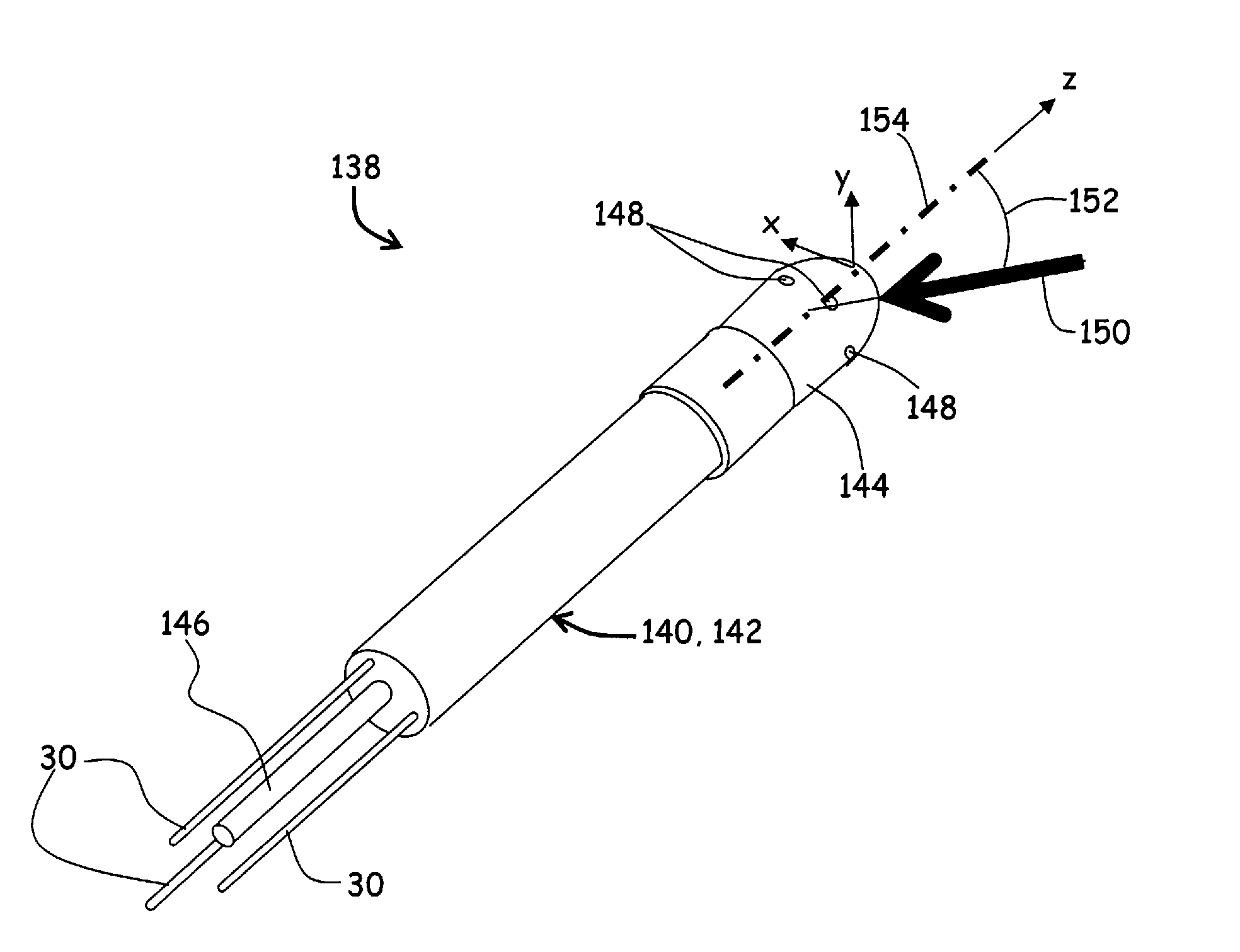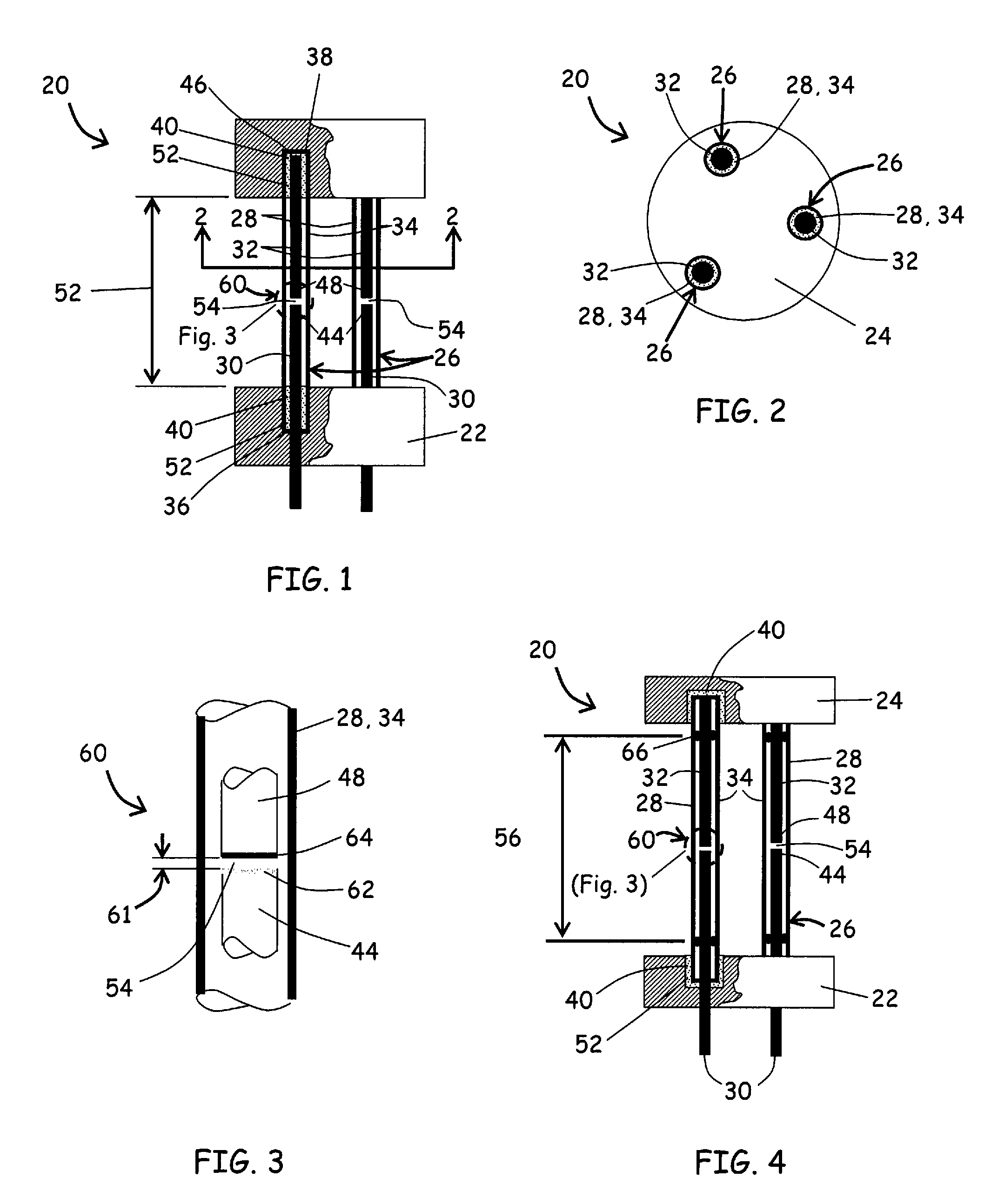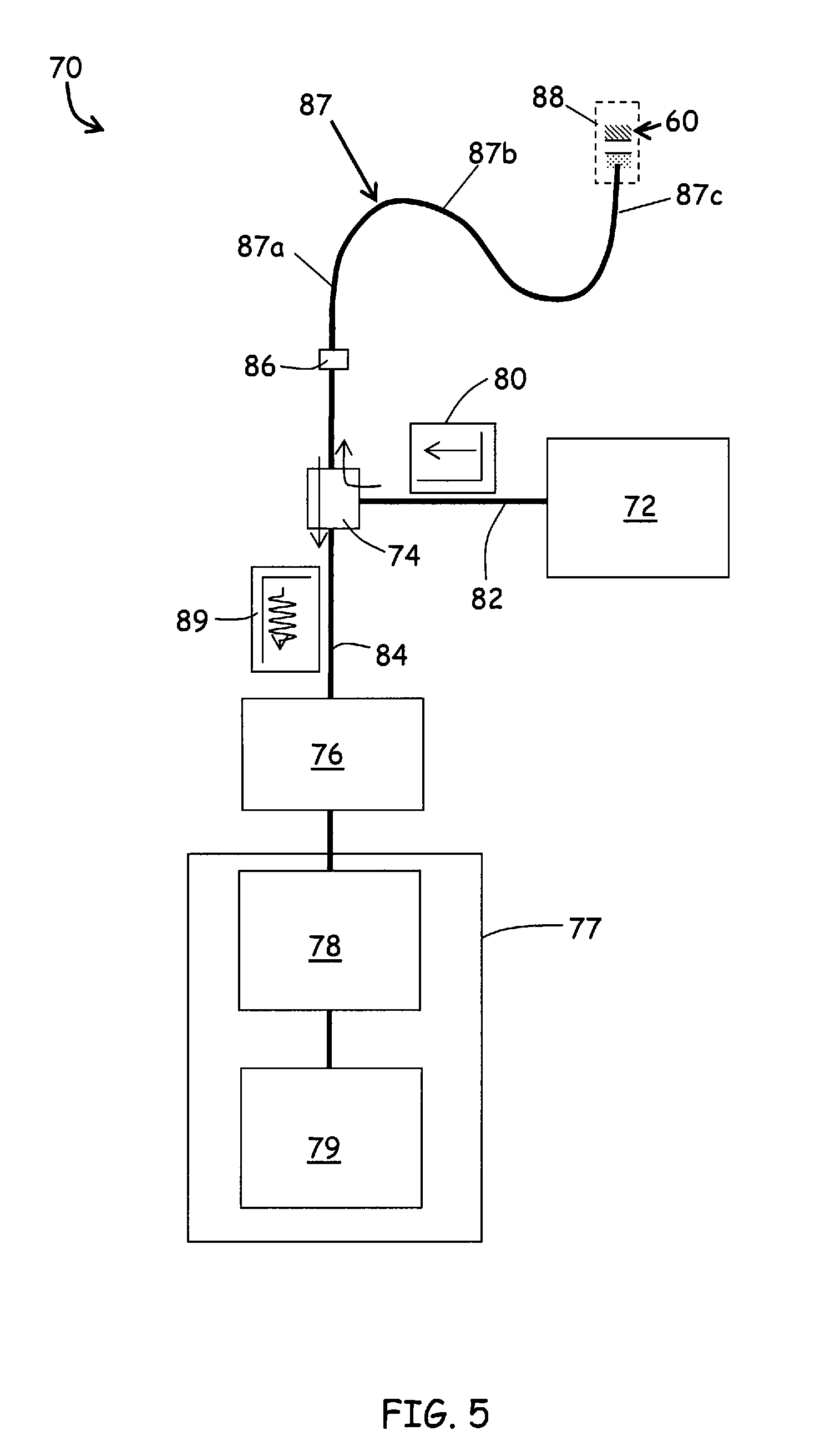Touch Sensing Catheter
a technology of force sensing and catheter, which is applied in the field of force sensing devices, can solve the problems of time-consuming, complicated mapping procedure, and rely on manual feedback
- Summary
- Abstract
- Description
- Claims
- Application Information
AI Technical Summary
Benefits of technology
Problems solved by technology
Method used
Image
Examples
Embodiment Construction
[0057]Referring to FIGS. 1 through 3, a strain sensor assembly 20 is depicted according to an embodiment of the invention. In this embodiment, a proximal or base portion 22 and a distal or head portion 24 are separated by a trio of strain sensing elements 26. Each strain sensing element 26 includes the standoff member 28, a transmitting element 30 and a reflecting element 32. Each standoff member 28 is comprised of a hollow tube 34 having a proximal end 36 and a distal end 38 that are disposed in sockets 40 formed in the proximal and distal portions 22 and 24.
[0058]In this embodiment, the transmitting element 30 of each strain sensing element 26 includes a free end 44 that extends partway into the hollow tube 34. The reflecting element 32 includes an anchor end 46 and a free end 48 and is housed within the hollow tube 34 opposite the transmitting element 30.
[0059]The transmitting and reflecting elements 38 and 42 are each secured to the hollow tube 36 with a potting 52 and are posit...
PUM
 Login to View More
Login to View More Abstract
Description
Claims
Application Information
 Login to View More
Login to View More - R&D
- Intellectual Property
- Life Sciences
- Materials
- Tech Scout
- Unparalleled Data Quality
- Higher Quality Content
- 60% Fewer Hallucinations
Browse by: Latest US Patents, China's latest patents, Technical Efficacy Thesaurus, Application Domain, Technology Topic, Popular Technical Reports.
© 2025 PatSnap. All rights reserved.Legal|Privacy policy|Modern Slavery Act Transparency Statement|Sitemap|About US| Contact US: help@patsnap.com



